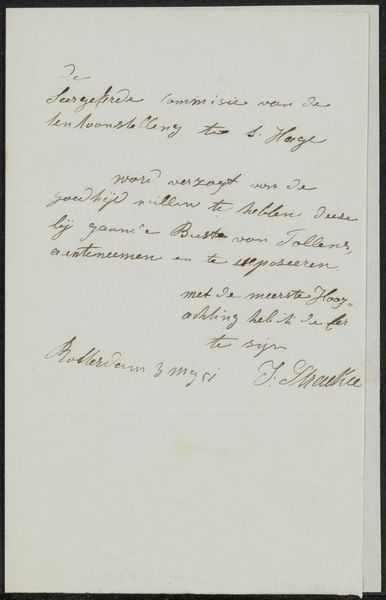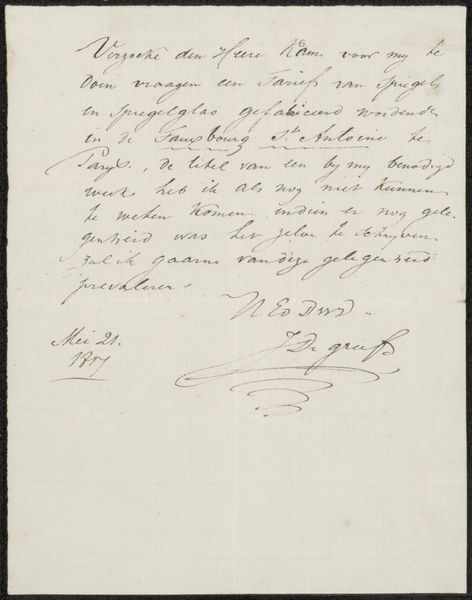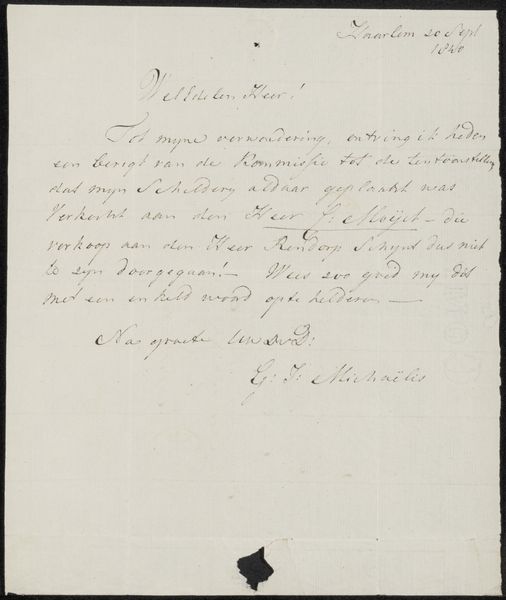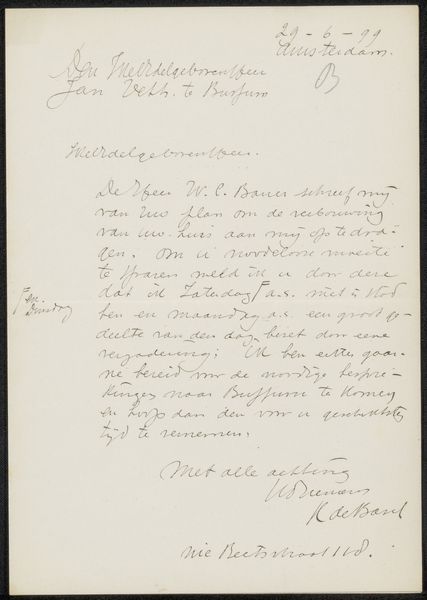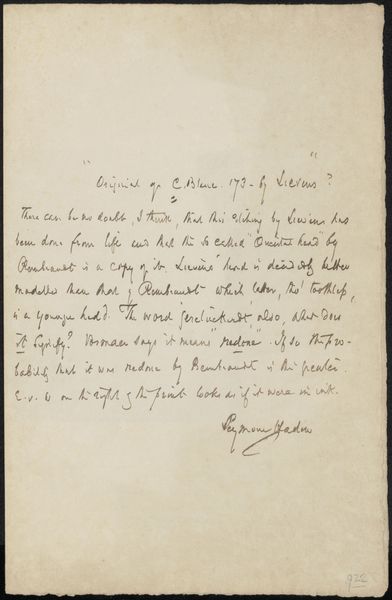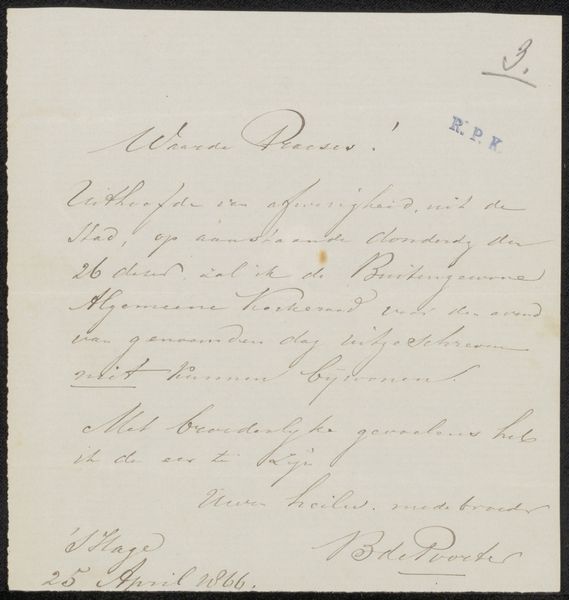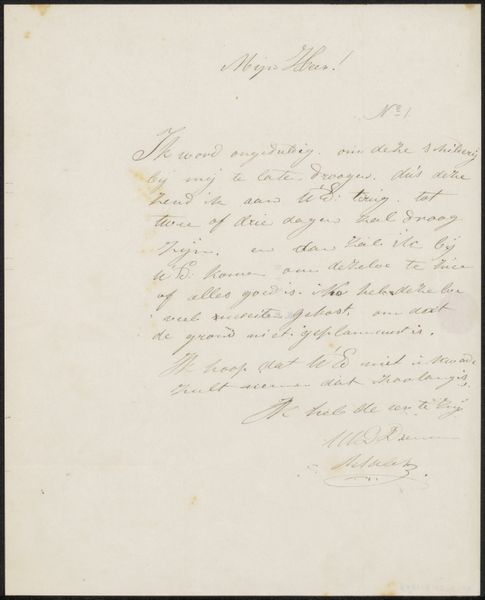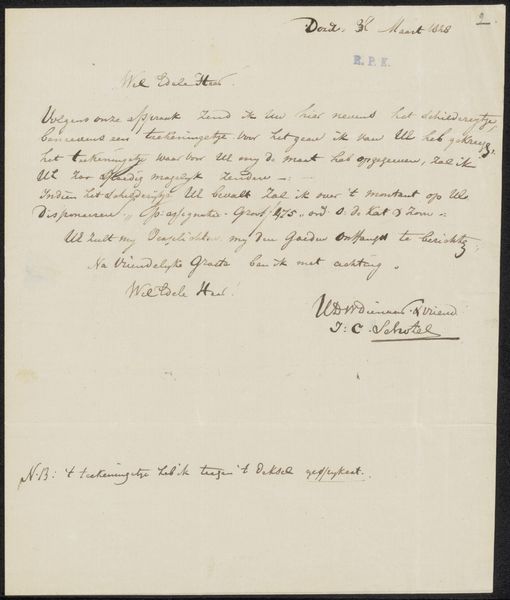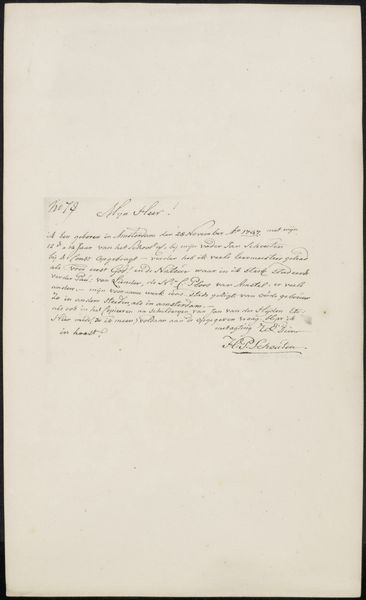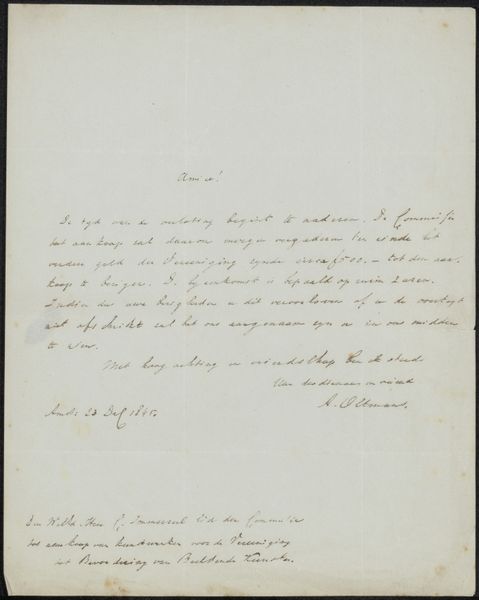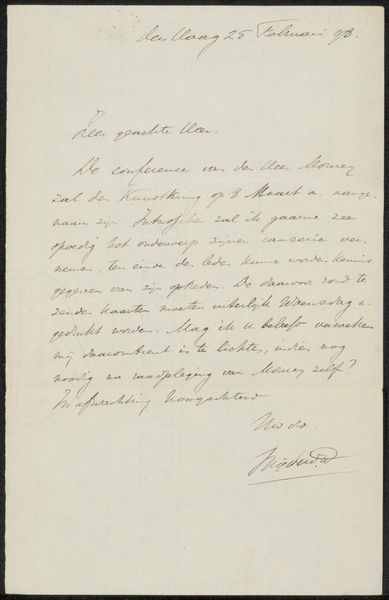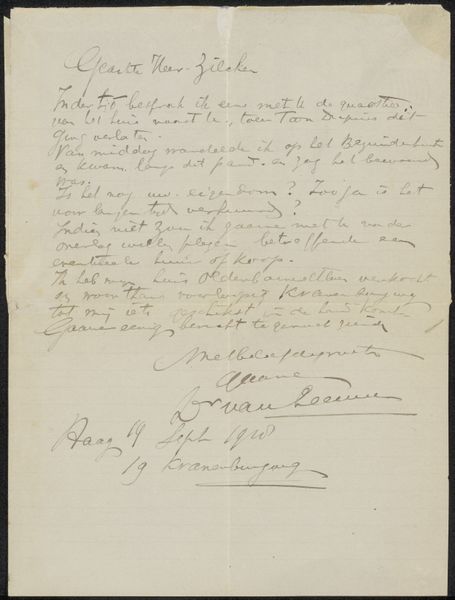
Brief aan Christiaan Immerzeel en de heer Van den Berg Possibly 1841 - 1849
0:00
0:00
drawing, paper, ink, pen
#
drawing
#
ink paper printed
#
pen sketch
#
hand drawn type
#
paper
#
personal sketchbook
#
ink
#
ink drawing experimentation
#
pen-ink sketch
#
ink colored
#
pen work
#
sketchbook drawing
#
pen
#
sketchbook art
#
calligraphy
Copyright: Rijks Museum: Open Domain
Curator: Gerrit Jan Michaëlis' "Brief aan Christiaan Immerzeel en de heer Van den Berg," likely dating from the 1840s, executed in ink on paper… What strikes you most about this intimate correspondence? Editor: The script, the very handwriting itself. It's like a glimpse into someone's thoughts frozen in time. I see the formal address, the expressions of gratitude… How do you interpret the significance of handwriting as a form of visual expression in this piece? Curator: Handwriting carries cultural memory. The specific looping and forms evoke the 19th century and hint at education, social standing, maybe even personality. Think of illuminated manuscripts—even functional text was a considered, symbolic art. Can you imagine what this letter, with its carefully chosen words and script, meant to the recipient? Editor: So, the way the letter is written is as important as what it says? Curator: Precisely! The flow and form, its imperfections even, reveal humanity. Calligraphy wasn't just about legibility, but communicating status, beliefs, and connection to heritage. A personal letter transcends its literal message; it becomes an artifact imbued with layers of social and emotional meaning. Notice, too, how the placement of the text itself echoes a certain elegance...what do you think this symmetry suggests? Editor: It makes the letter feel more considered, less like a casual note. I suppose everything, from the ink to the spacing, was carefully chosen to create a specific impression. Curator: Yes! The aesthetic elements, seemingly incidental, speak volumes about social convention and self-presentation. Editor: It is remarkable to consider the level of thought put into something as commonplace as a letter! It really elevates my understanding of it as a historical object.
Comments
No comments
Be the first to comment and join the conversation on the ultimate creative platform.
